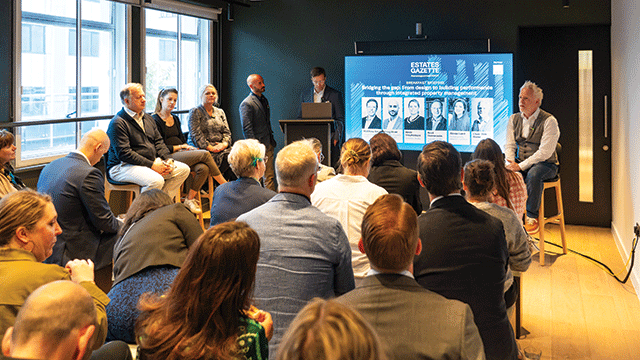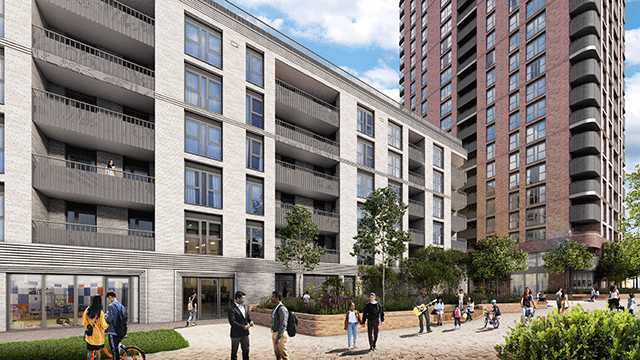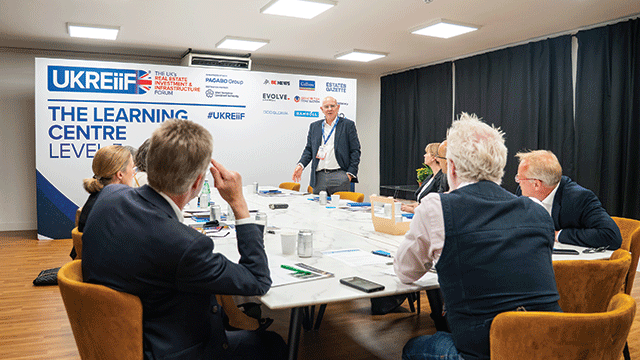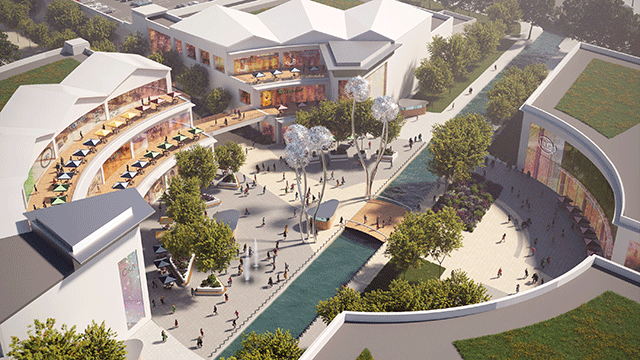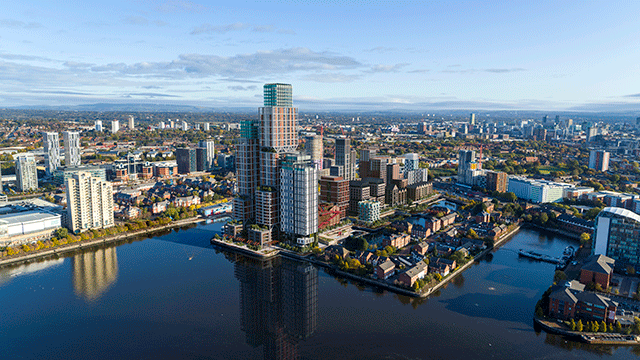Doesn’t it feel good when the sun is shining? And for now, the sun is shining on Birmingham.
The city’s all-important automotive sector is thriving on the back of strong export-led demand. This month, Jaguar Land Rover (JLR) revealed final-quarter profit up 40% and sales up 17% at a mighty £15.8bn.
With an eye on the automotive supply chain, IM Properties launched the UK’s first post-boom speculative warehouse scheme – a 334,500 sq ft two-unit project at its Birch Coppice Business Park.
In offices, too, things are looking bright. Supply in the bellwether market is shrinking fast. Colliers International says just 891,000 sq ft of vacant prime stock is on the city centre market.
Meanwhile, figures from Ernst & Young show the West Midlands has done well in foreign direct investment (FDI). The region came fourth in last year’s league table, claiming 50 projects – 32% more than in 2011. No surprise that the top FDI sectors were automotive components and food, scoring seven projects each.
So is everything rosy this June? It is hard to say. Economists say Birmingham should not assume that a rising auto sector will pay back easily for the city.
Richard Holt, regional economist at Roger Bootle’s Capital Economics, warns that growth in the automotive sector does not easily translate into good fortune for the rest of Birmingham.
Growing faster
“Looking at the purchasing managers index for the West Midlands, the region has often been one of the strongest in the UK, growing faster than the UK average,” he says. “But on the other hand, unemployment is less favourable and has been poor for some time, showing one of the largest rises in the UK.”
In May, unemployment in Birmingham was 10.6% – well above the UK or West Midlands figures, but falling slowly.
Holt says his concern is that the growth in the automotive sector is on the back of global trends, not least rapidly growing markets in the Far East, and that the city region will be exposed if those trends go into reverse. Wobbles in the world economy harmed the regional economy in April and May, despite a feeling of growing optimism (see panel right).
Holt is not alone in his concern. John Bryson, professor of enterprise and competitiveness at Birmingham Business School, is an expert on the local economy and advised the recent Heseltine review on regional growth.
Although the automotive sector remains one of the biggest drivers of the local economy, Bryson says Birmingham does not find it easy to turn that into economic growth.
“Auto businesses like JLR now have a relatively limited impact on the regional economy because supply chains are not nearly as concentrated as they were,” he says. “That means the supply chain is now extended widely beyond the West Midlands. Today, the West Midlands accounts for 10-15% of the supply chain, not 50% as it was a few years ago. The danger is that the supply chain will get eroded even further.”
However, about 30% of service-sector jobs in the area are related to manufacturing, either directly or indirectly – and that could be where the effects of the auto industry’s success are felt earliest and strongest.
Given the auto industry’s dominance, many in Birmingham hope to promote new business sectors. A life sciences park and a high-tech hub are popular arrivals, but are likely to have a limited economic impact (see panel above).
The key to success, says Bryson, is for local businesses to learn to adapt their existing skills to new markets. “Look at the region’s metal fabrication and engineering skills,” he says. “In the 19th century, they adapted from making steam axles to making cars, but until recently, supplying single big customers in the auto industry has made them dependent, and so the auto supply chain companies have lost their flexibility. Getting that adaptability back is the key.”
There is already some evidence that this adaptability is returning: one former MG Rover supplier has transformed from car window fitter into greenhouse maker.
“This is the kind of successful change we need to see more of,” says Bryson.
Certainly, Birmingham can expect change. Data projections show the city’s workforce is already in the throes of a massive upheaval.
Demand for skilled mechanical and electrical, plant and machinery workers, “other skills” and low-level office skills in the Greater Birmingham & Solihull LEP area are expected to fall sharply in the years to 2025, some as much as 65%.
At the same time, demand for desk jobs in the culture and media sectors is expected to rise by 16%, and for business and public service professionals by 31%, which means significantly less demand for traditional industrial floorspace – and a lot more demand for fancy offices.
Property folk are still catching up with the economists latest predictions. Ian Stringer, regional managing partner at GVA, says: “Birmingham depends much less on the motor trade than it did 30 years ago.
Its economy is a lot more balanced, and the recent growth of the auto sector is an unexpected boon.
“We are seeing changing employment trends, including the growth in the professional and creative sectors. This could increase demand for office space.”
Sectors to watch
High-tech
Could a high-tech cluster, like London’s Old Street Roundabout, provide the next growth boost for Birmingham’s economy? Or could the West Midlands capitalise on its diverse gene pool to create a new medicines-testing cluster in the life sciences?
Both have their fans. Lucan Gray’s 16-acre Digbeth site is already home to 400 tech firms employing 2,000 staff, reputedly the largest cluster of creative and digital industries outside London.
Gray hopes to add another phase of development to the popular Custard Factory and Fazeley Studios. The project could add 100,000 sq ft by late 2015.
“We are looking at something like Fazeley Studios, which opened in grim times in 2008 and was overwhelmed with demand,” he says. “The old adage about ‘build and the tenants come’ works – if you build the right stuff.”
Life sciences
According to data from GVA, the West Midlands has virtually no presence in the increasingly valuable medical biotechnology sector and does relatively badly in other parts of the life sciences.
Birmingham city council hopes to put that right after a rumoured £10m deal. It has approved the purchase of a 9-acre site at Battery Park for a 400,000 sq ft life science park, close to universities and Queen Elizabeth Hospital. But with a potential 20-year development timetable, instant results are unlikely.
Economic wobbles
April and May felt like good months for the West Midlands, but the figures show a much more fragile outlook.
The Lloyds TSB purchasing managers index – which reflects forward orders, particularly in the manufacturing sector – shows a stable economic outlook if it registers 50 points, a shrinking outlook if it’s lower, growing if it’s higher.
In April, the PMI index for the West Midlands slipped to 49.8, down from a flatlining 50 in March, and 50.7 in February. However, the surveys show a gentle rise in new orders.




